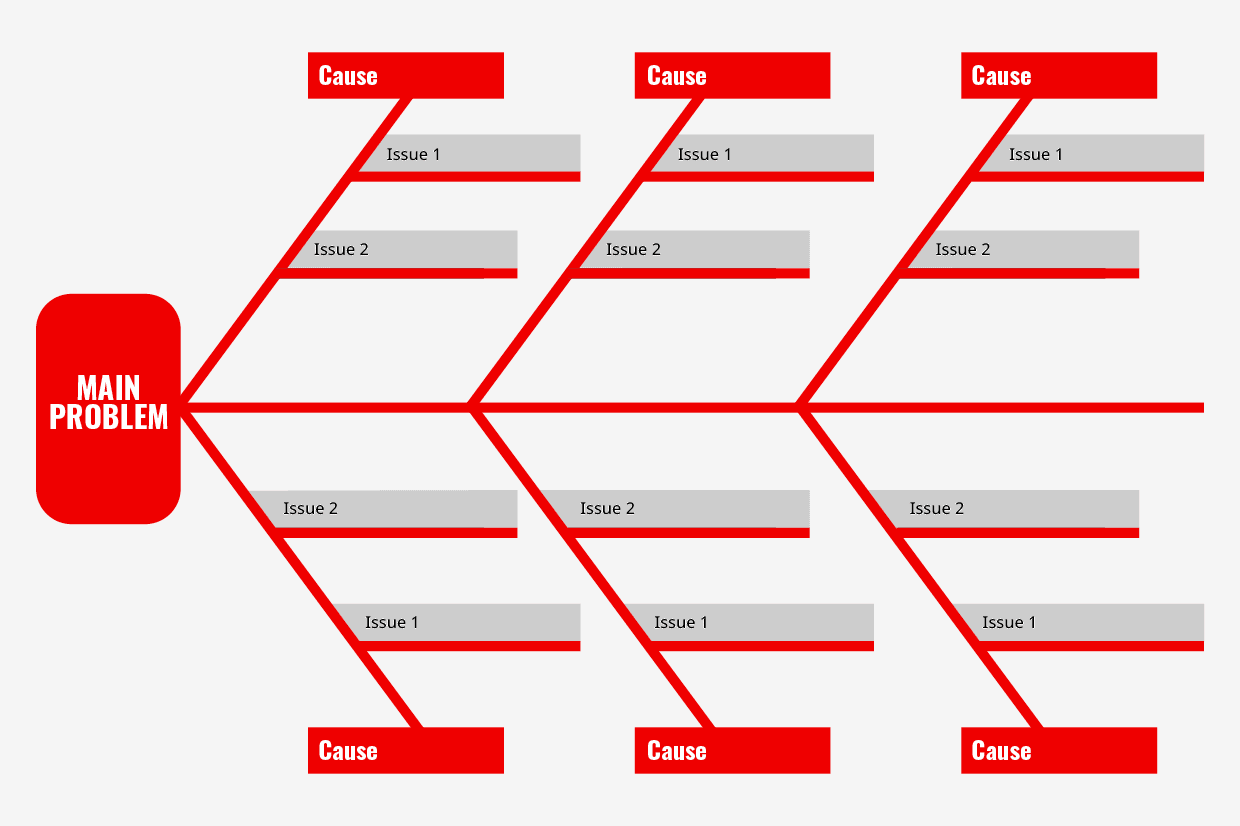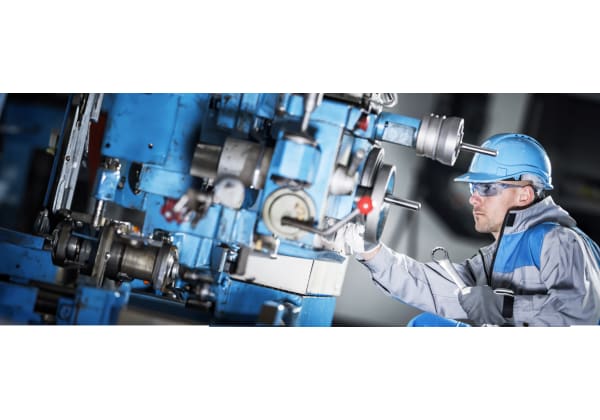- Published 17 Oct 2023
- Last Modified 29 Jan 2024
- 6 min
How Root Cause Analysis Benefits Maintenance
Do you take time to consider the underlying cause of machinery or equipment failure? Root cause analysis (RCA) enables engineers to determine exactly why a problem occurred and prevent it from happening again. Read our guide to find out how to do the RCA process – and its benefits.

Root cause analysis (RCA) helps manufacturers understand why a piece of machinery has failed using a variety of tools and techniques. The aim is to prevent the problem occurring again. Let’s take a closer look at what the root cause analysis steps are and how they work.
What is Root Cause Analysis?
A root cause definition is that it is the underlying problem that leads to failure. Root cause analysis uncovers the cause of machinery failure, using methods such as the fishbone diagram, 5 whys and Pareto chart. According to the American Society for Quality, a root cause is ‘a factor that caused a nonconformance and should be permanently eliminated through process improvement. The root cause is the core issue — the highest-level cause — that sets in motion the entire cause-and-effect reaction that ultimately leads to the problem(s)’.
In engineering analytics, a root cause analysis report is a form of systems failure analysis. In maintenance, this means resolving the true cause of mechanical problems, whether they be technical, related to human factors, or the result of systems and processes.
Root Cause Analysis Methods
One of the methods of root cause analysis is to ask repeated questions to determine the ‘why’ of equipment failure. This approach is called the ‘5 whys’ (although you can use many more – or less – questions). You might begin with asking why the equipment failed. Each answer generates another ‘why’ question until the root cause is uncovered.
Other types of root cause analysis for equipment maintenance include failure mode and effect analysis, the fishbone diagram, what-if, HAZOP, fault tree analysis, job safety analysis, and the management oversight and risk tree.
The 5 Whys Technique
The 5 whys is one of the most commonly used methods for determining the root cause of equipment failure. In a hypothetical maintenance scenario, that might look like this:
1. Why did the machine fail?
A: It overheated.
2. Why did the machine overheat?
A: Because the cooling fan stopped.
3. Why did the cooling fan stop?
A: It had not been serviced.
4. Why had the cooling fan not been serviced?
A: The fan was not part of the maintenance regime.
5. Why was the fan not part of the maintenance regime?
A: Because the maintenance plan did not include HVAC equipment.
In this way, the root cause for a failure is identified and a solution can be implemented to stop it happening again. The 5 whys is a simple method and is most applicable when there is a single chain of cause and effect. More complex problems may require other approaches to the RCA process.
Fishbone Diagrams
The fishbone diagram can help you identify possible causes for a problem with machinery. It resembles the skeleton of a fish and provides a visual way of categorising potential causes of the issue. The head of the fish contains the maintenance-related problem in the form of a statement. An arrow is drawn across the page pointing to the head (the backbone). The team using the fishbone diagram begins by brainstorming the possible causes of the breakdown. Possible overall causes are identified and drawn from the backbone with arrows, creating the bones of the fish. Here, tools such as the 5 whys are used to drill down further into each issue and find the root cause. Once the root cause has been identified, the team can decide on the next steps to take to prevent the problem recurring.

Root Cause Analysis Tools
The fishbone diagram and the 5 whys are just two of the tools available for failure analysis engineering. Failure modes and effects analysis helps engineers to prioritise maintenance actions by giving them risk priority numbers. It aims to anticipate and mitigate the impact of failure proactively and is widely used in aerospace and manufacturing.
Advantages include optimised production costs and a structured framework for prioritising corrective actions. As well as maintenance, the system can be used to improve business processes and product design and development.
Like the fishbone diagram, fault tree analysis is a graphical technique that uses Boolean logic to map out human and system failures. Fault tree analysis describes the relationships between asset failures and subsystems and uses logic to identify causes and effects.
Pareto analysis and Pareto charts are based on the work of an Italian economist, Vilfredo Pareto. He stated that 80 percent of consequences stem from 20 percent of causes (known as Pareto’s Principle, or the ‘80/20 Rule’). Engineers use Pareto charts to show how most failures are caused by a small number of factors. It’s then possible to prioritise correcting the causes that result in the majority of undesirable effects.
Six Sigma methodology can also be used in engineering analytics to improve a maintenance regime and carry out root cause analysis. Six Sigma uses the DMAIC process – define, measure, analyse, improve, control – to minimise errors in a production environment.
Root Cause Analysis Examples
All the above techniques are used by engineers when identifying the causes of machinery failure. Failure modes and effects analysis (FMEA) is also widely used by maintenance managers. It looks for all the errors in a machine, product or process.
Finally, don’t forget that a computerised maintenance management system (CMMS) can also perform root cause analysis by allowing engineers to analyse asset maintenance data when failure occurs. For example, the work orders issued to technicians by a CMMS provide information on problems and how they were resolved.
Benefits of Root Cause Analysis
There are numerous benefits to root cause analysis. They include:
Better Efficiency
Identifying the causes of failure of machinery provides a way of improving systems, processes, and human factors. This can enhance the efficiency of a manufacturing operation.
Cost Savings
Preventing future failures means less money spent on repairs and maintenance. Unplanned downtime is also very expensive for manufacturers and RCAs help prevent this.
Less Downtime
Because machinery is less likely to fail, downtime is reduced. This enables a production plant to be more productive.
Continuous Improvement
Carrying out structured RCAs is different from a reactive culture where machinery is run to failure and fixed. RCAs provide a way of improving production and maintenance processes and ensuring that lessons are learnt from failure and acted on.
Did you know RS provides technology for condition monitoring and electronics testing? Learn more about condition monitoring and maintenance here.
Related Articles
Related links
- Proactive Maintenance to Optimise Machinery Lifespan
- Understanding the Benefits and Limitations of Infrared Thermography in Plant and Machinery Maintenance
- Tool Management Strategies for Efficient Maintenance
- Maintenance Using Vibration Analysis and Condition Monitoring
- Why are Industrial Lubricants Important?
- What is Planned Preventative Maintenance?
- Robotics in Industrial Maintenance
- Reliability-Centred Maintenance


